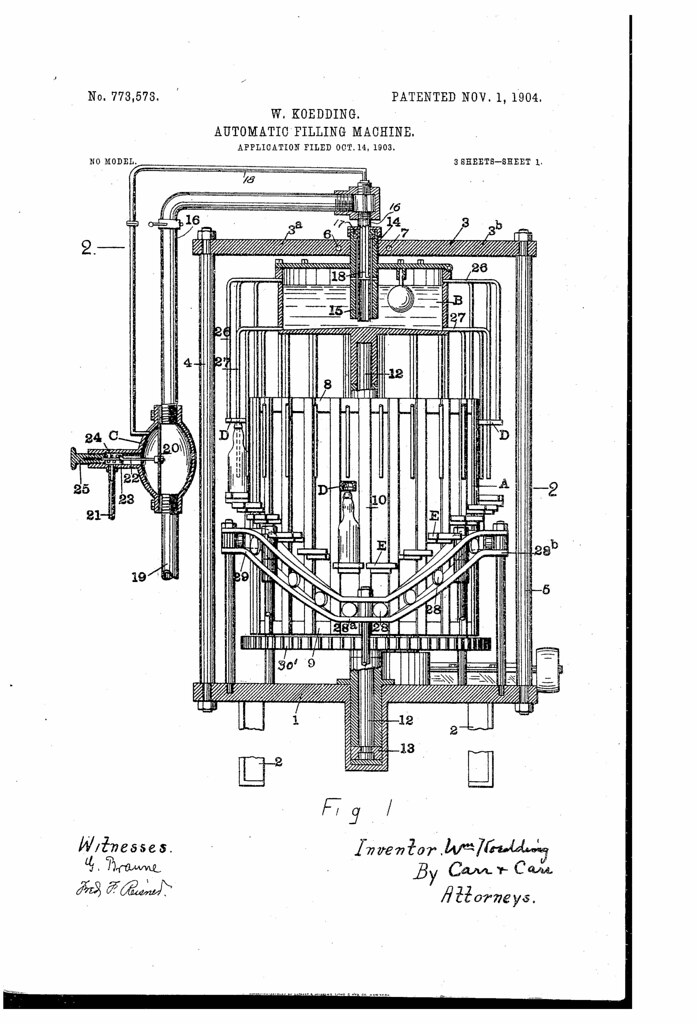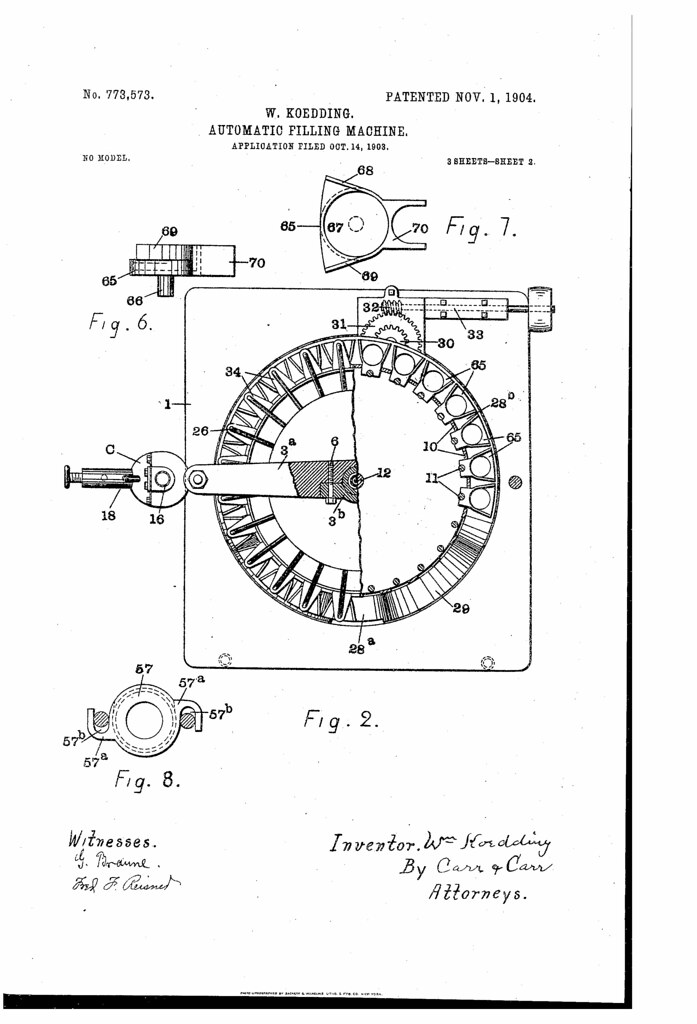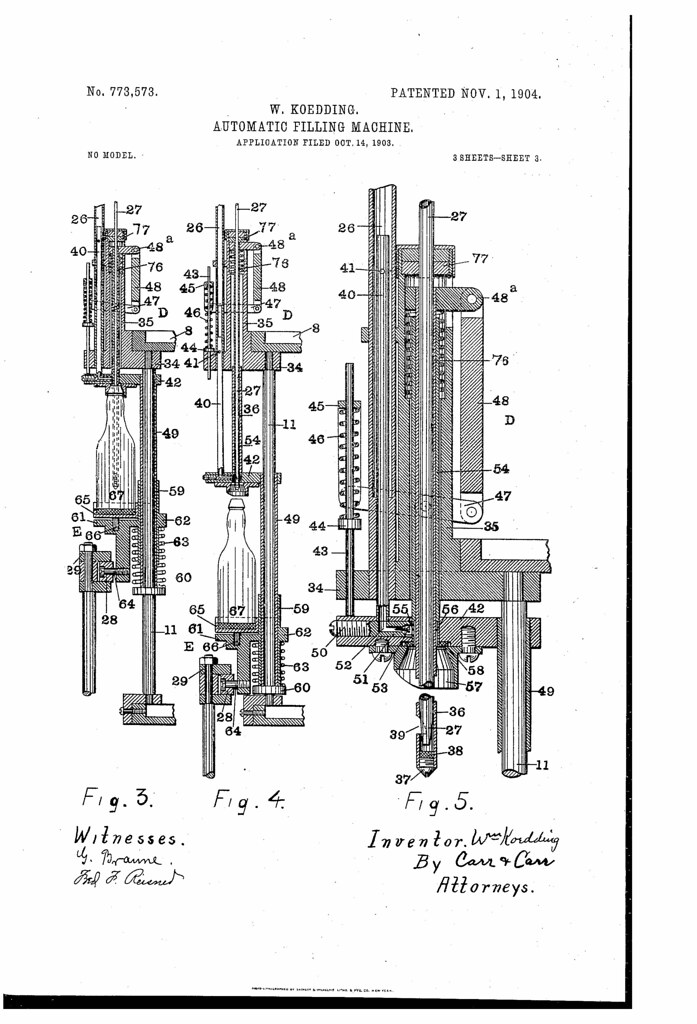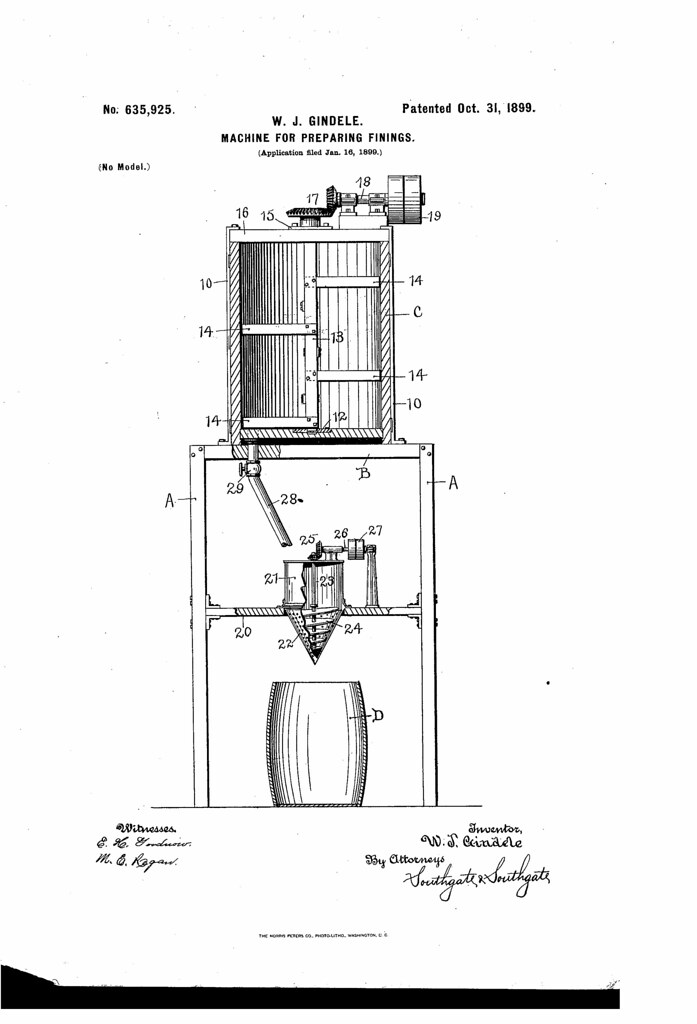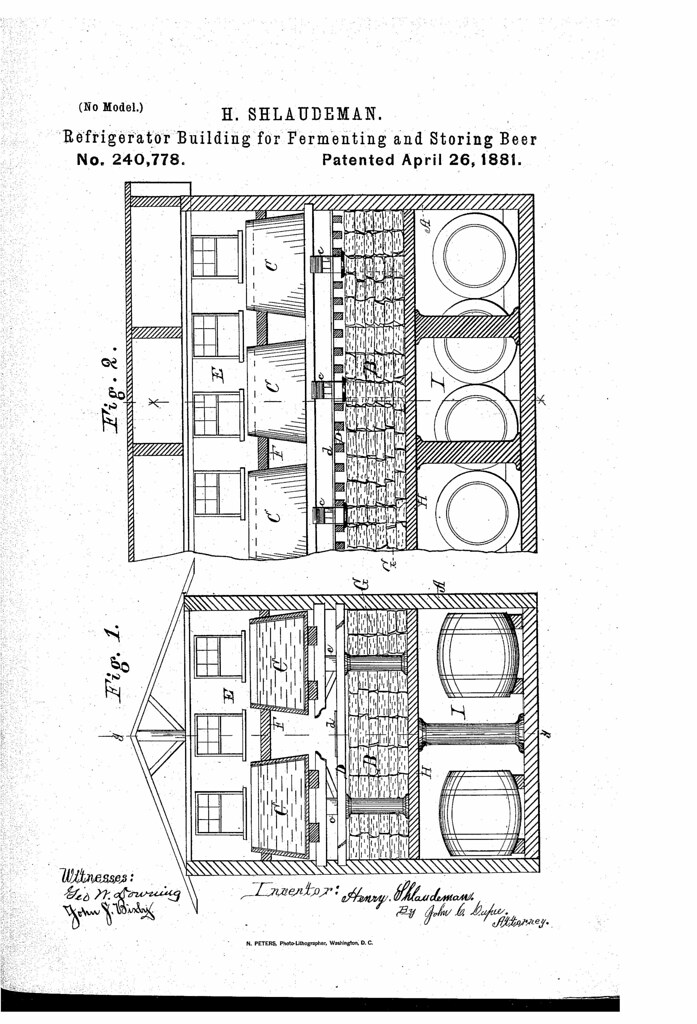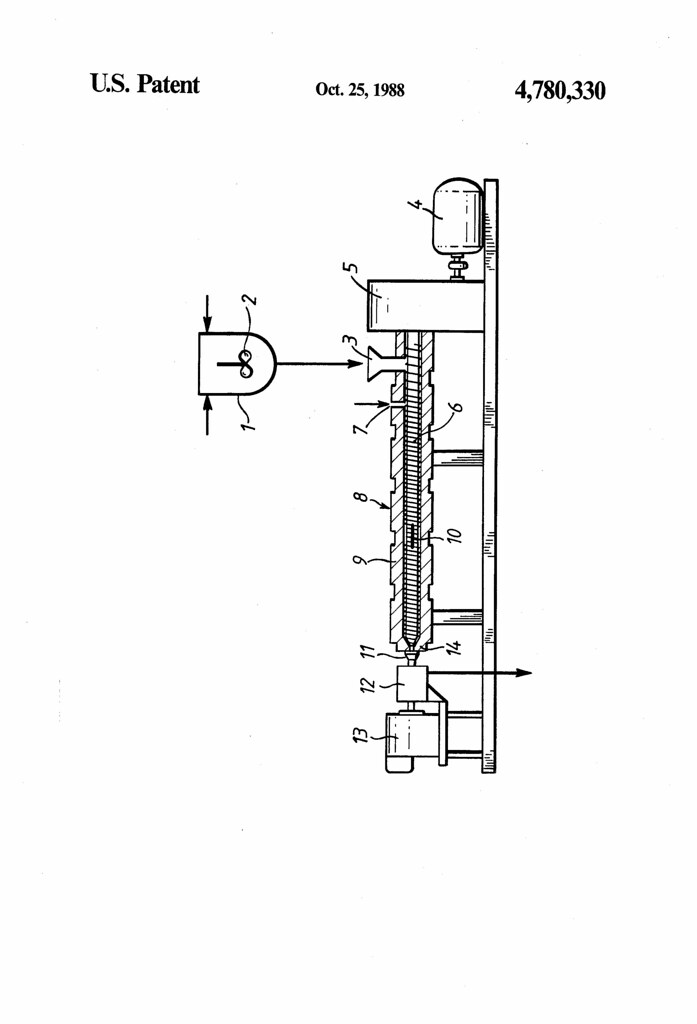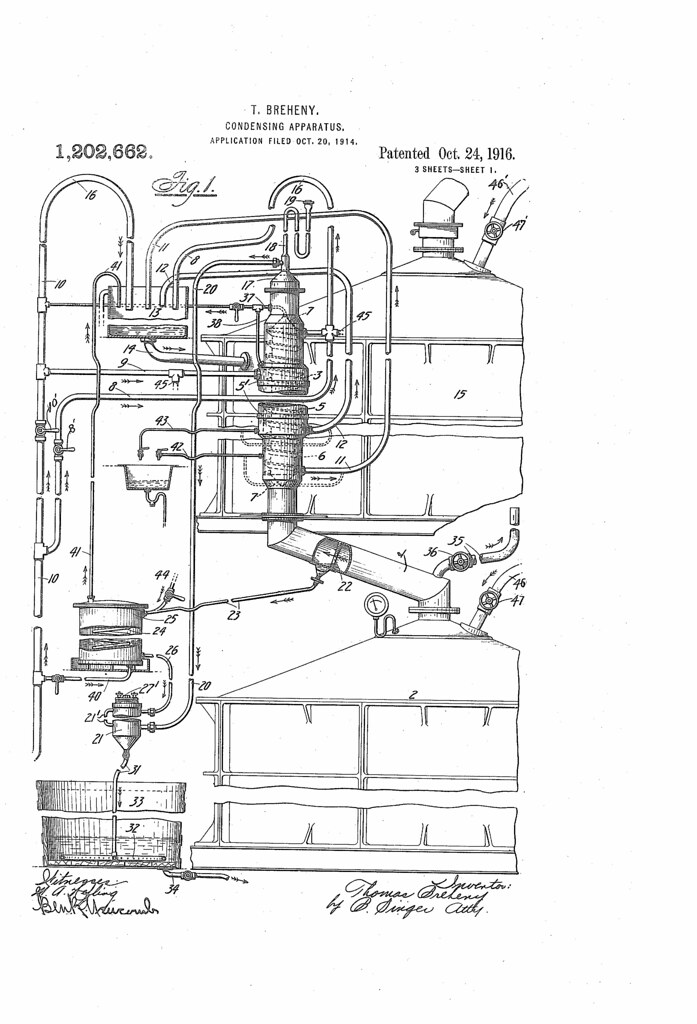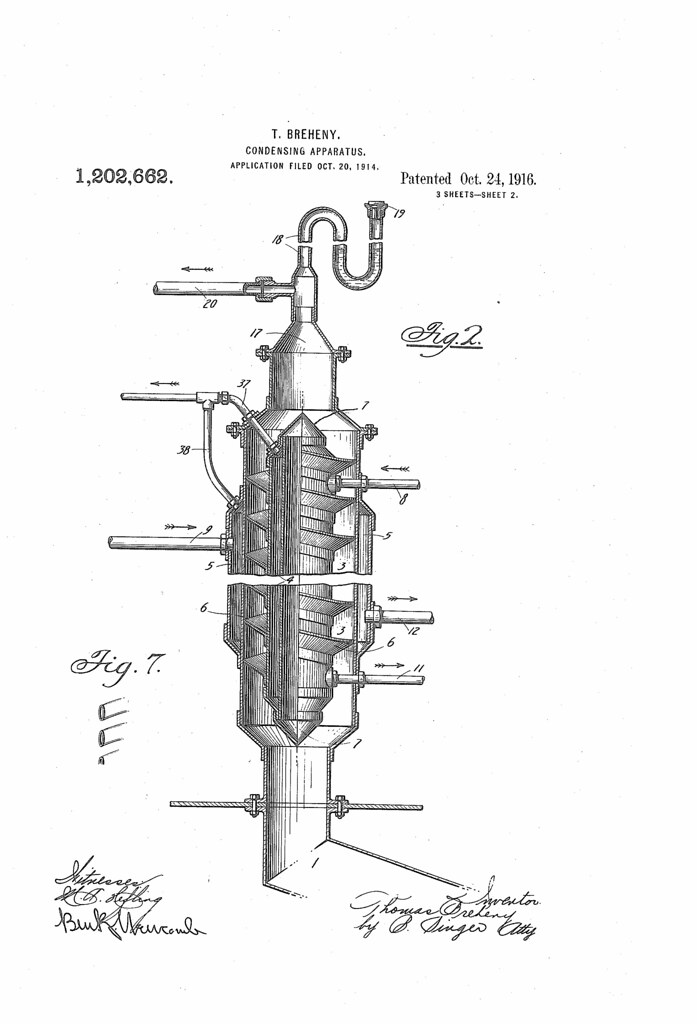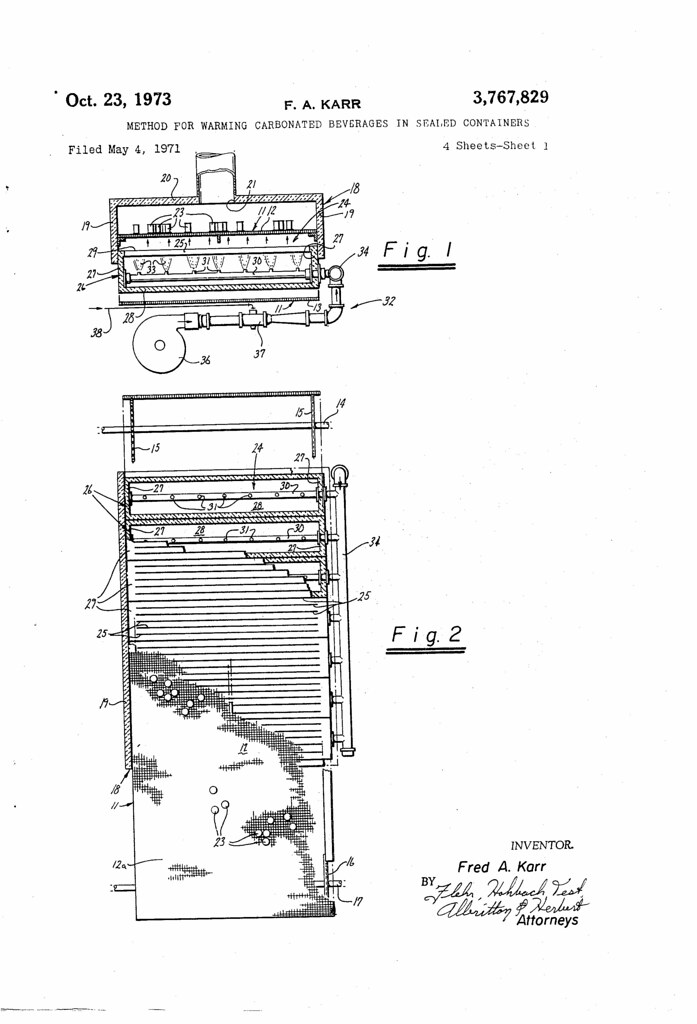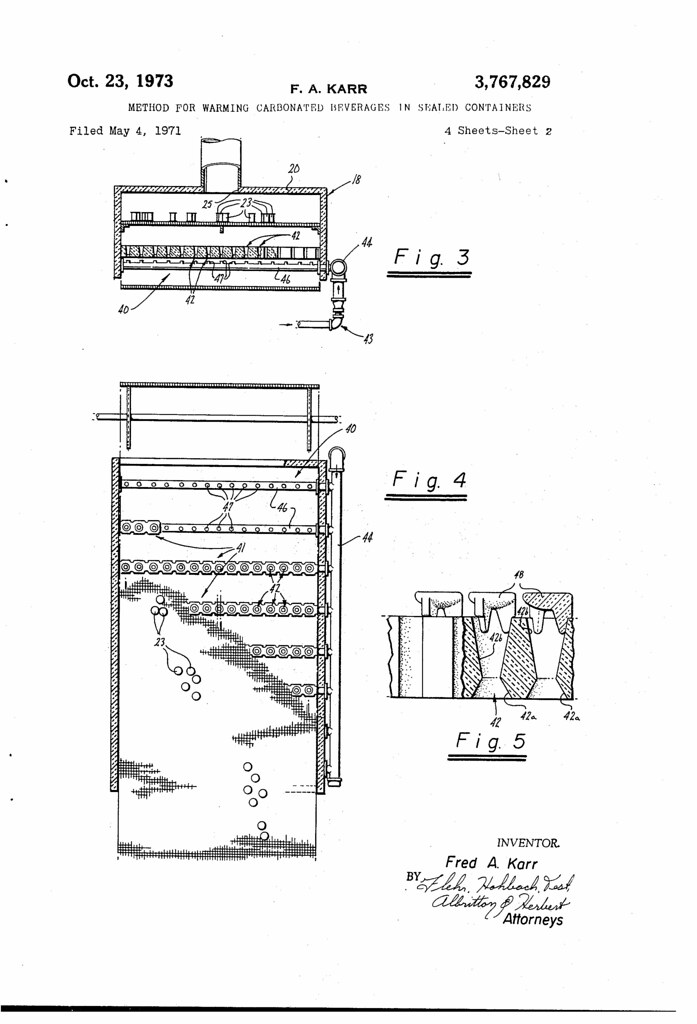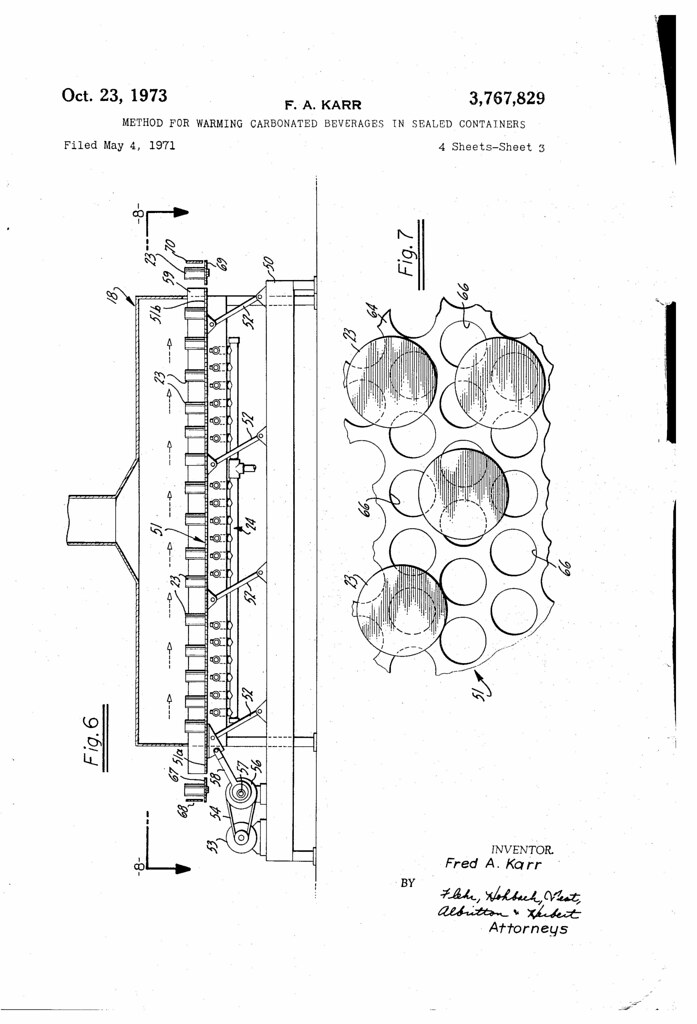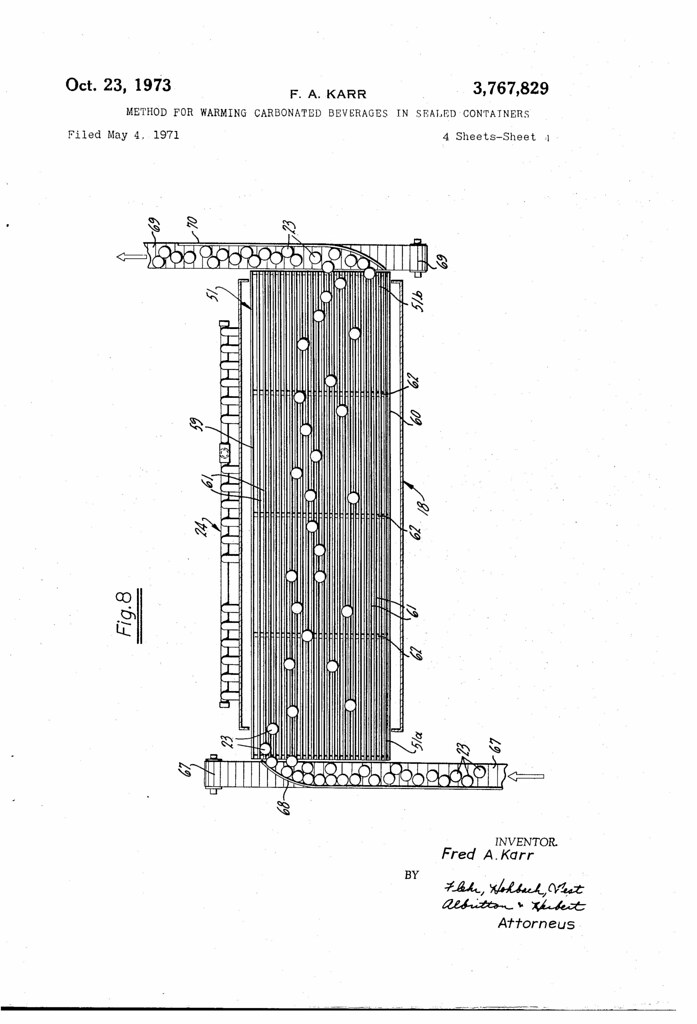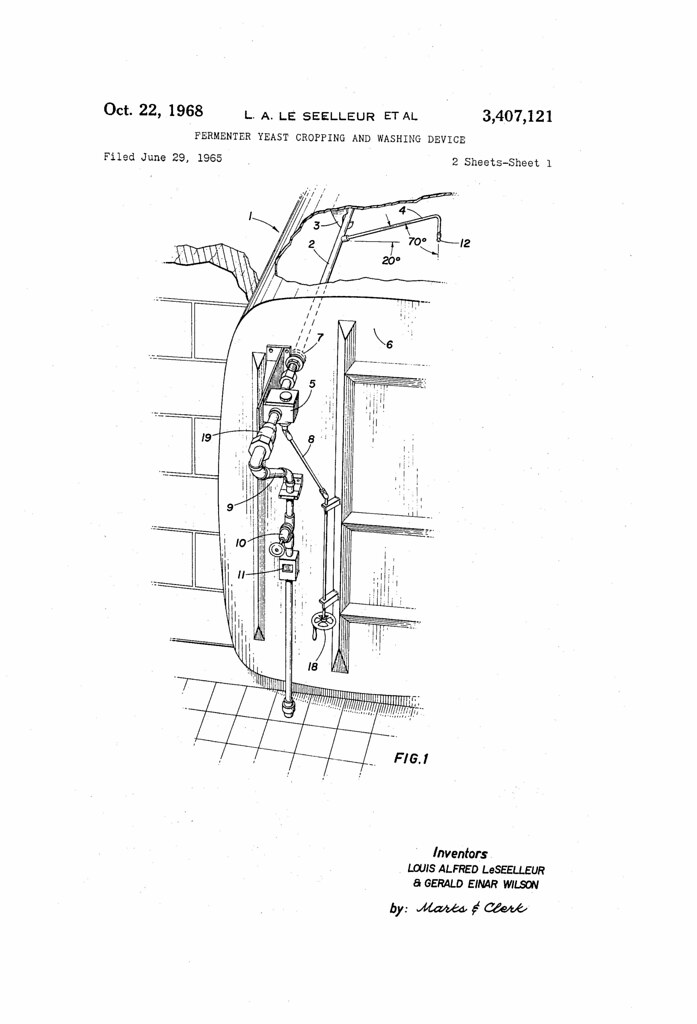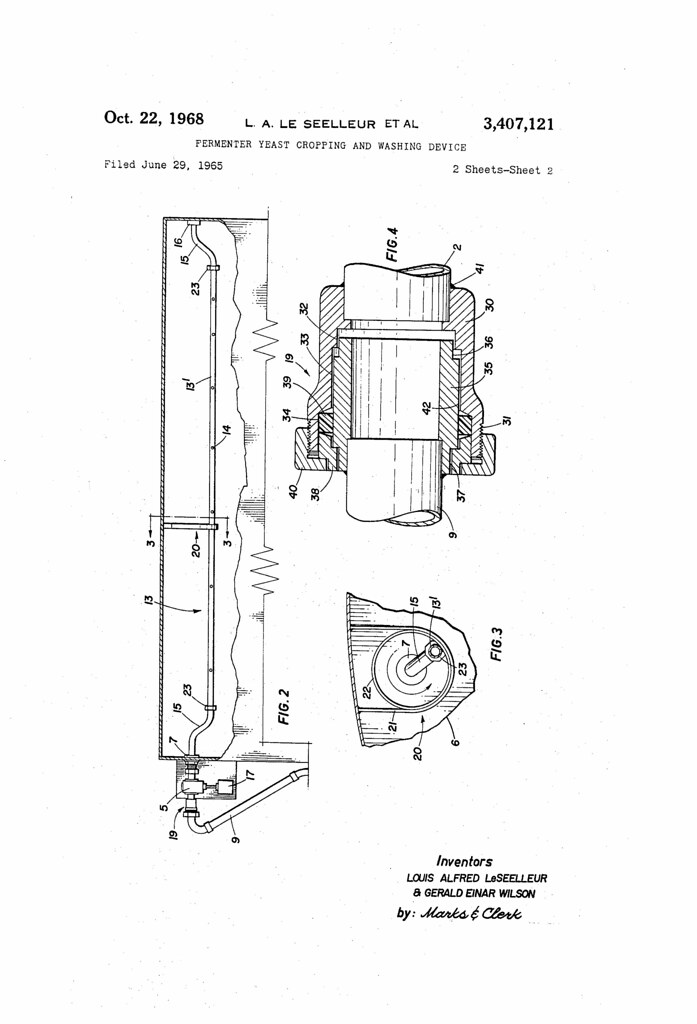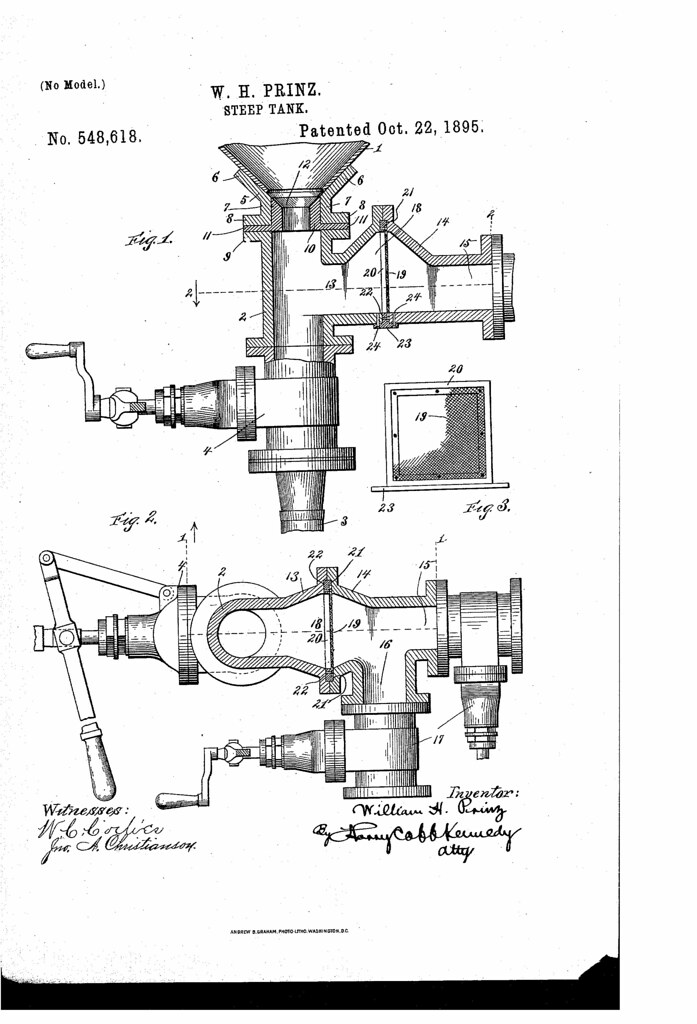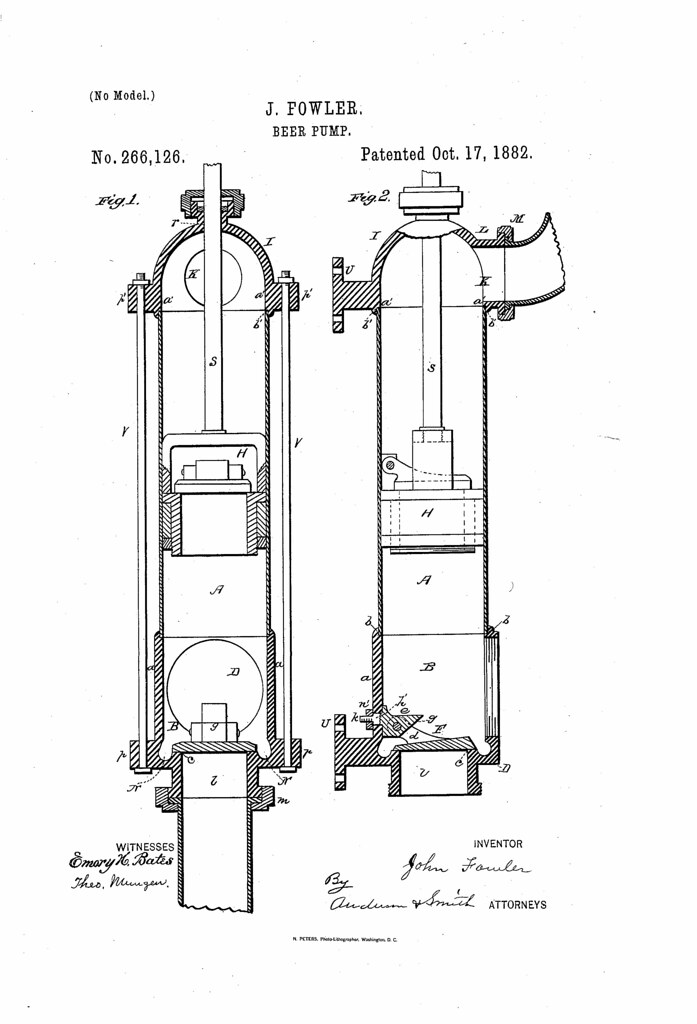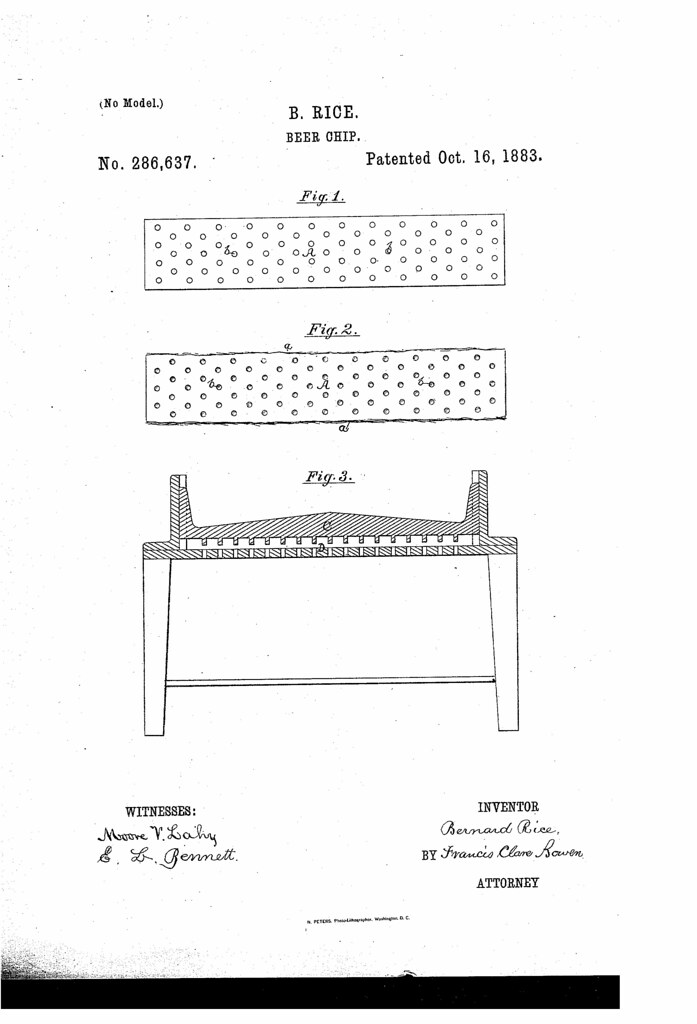
Today in 1904, US Patent 773573 A was issued, an invention of William Koedding, assigned to the William J. Lemp Brewing Company, for his “Automatic Filling Machine.” There’s no Abstract, although in the description it includes these claims:
My invention relates to machines for filling bottles and other receptacles with liquid, and has for its principal objects to fill bottles from a tank containing liquid undergaseous pressure, to open communication between the bottle and the gas-filled portion of the tank before the liquid is admitted and to continue it after the liquid is cut ofi’, to regulate the admission of gas under pressure to the tank, to fill bottles automatically, and other objects hereinafter appearing.
